Celebrating Creativity in the Life of Dr. Seuss
March 2nd marks the birthday of a zany writer, creative thinker, and incredible man: Dr. Seuss. As I looked into the life of one of our family's favorite authors, I was fascinated by his journey from being known as Ted Seuss Geisel to the man we know today as Dr. Seuss.
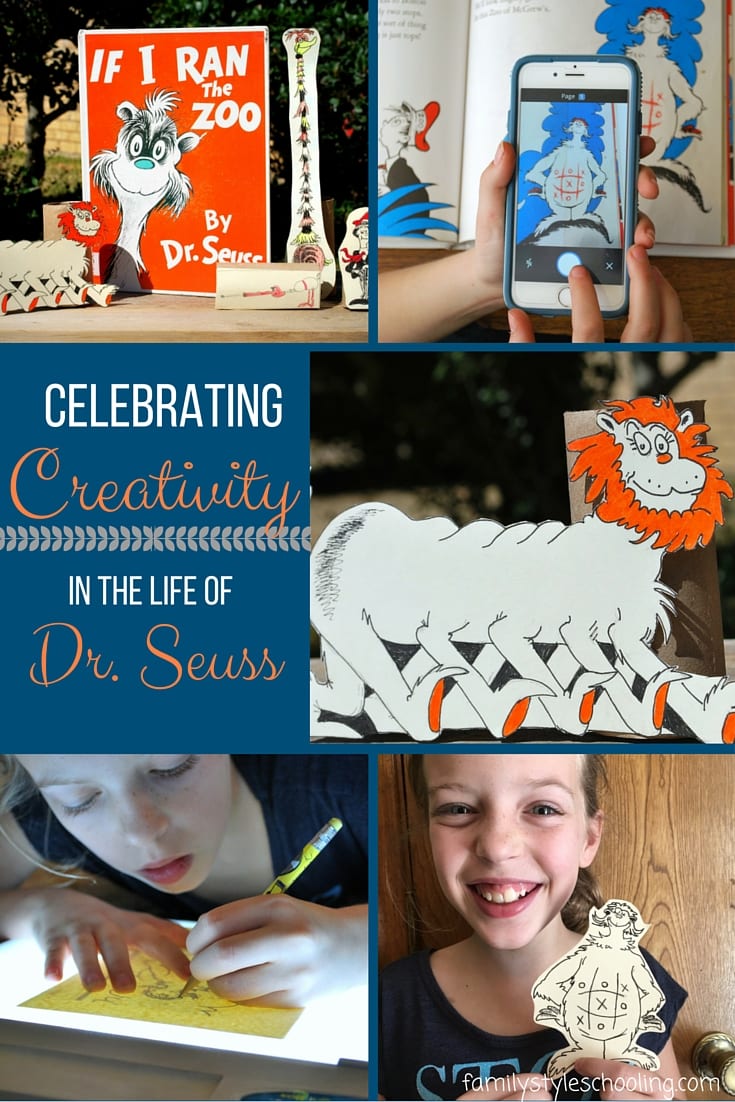
This post may contain affiliate links. See my full disclosure policy for more details.
Dr. Seuss's Father
Ted Geisel was born in 1904 into a strong German family in Springfield, MA. It wasn't easy growing up German during the first World War. It didn't help that his family ran a brewery. Although his father was set to inherit the family business, when his time came to take it over, the US passed a law that prohibited the sale of alcohol. Instead of sinking into depression, he immersed himself into his volunteer work at the Springfield Parks Commission and ended up getting a full time job with them which he held for the rest of his life.
What Ted's father taught him was that following a set course for your life isn't guaranteed, and sometimes the best things in life come from the unexpected path. While he might not have made his family independently wealthy, he blessed an entire community by living out his passion.
How Ted became Dr. Seuss
Ted was a gifted doodler. He was known for his wit and humor, which often got him in trouble. In college he'd sign his illustrations with the name "Seuss", his mother's maiden name, so that when he grew up and became a real writer, he could use his real name. After graduating from Dartmouth, he pursued his doctorate from Oxford. In the middle of his Shakespearean punctuation class, he realized that this was not the place for him. At the encouragement of a friend, he left Oxford, moved back home and started submitting illustrations as a fictional biologist signed, "Dr. Seuss."
Even though he resisted his natural talents in the beginning, he finally decided to write a children's book. He started with an "ABC" book filled with his creative creatures. No one published it. His next attempt, "And To Think That I Saw it on Mulberry Street" was rejected more than twenty times before an old friend from Dartmouth saw it and decided to publish it. The road to becoming Dr. Seuss wasn't a journey of singular focus and determination, but of trial and error, and a continual refining of his purpose.
Success Defined as a Seuss
The story of how Dr. Seuss came to be has really resonated with me. When I met my husband, we were destined to journey along the path less traveled. He was my first boyfriend, my first kiss, my first love. We got married before we graduated college. We got pregnant in the first three months of our marriage (while I was still in college). After college, he went to work for my dad, which had nothing to do with his degree. After my dad passed away, we moved in with my mother. At each of these points in our lives, we've been given buckets of advice pointing us away from the direction we were heading. Even now, our jobs are completely unconventional, and yet, we're on the path God has set for us.
Dr. Seuss encourages, "It's not how you start that counts, it's how you finish." The journey that has the bumps and twists and bends in it is often the journey worth taking.
A Suessical Craft
I asked my kids to come up with a Dr. Seuss inspired craft. They are getting older now, so they like to have a say in what we do. They're always finding ways to use old toilet paper rolls, so they decided to make a zoo inspired by "If I Ran the Zoo."

My two oldest looked at the illustrations from the book and drew their own versions of the characters. Imitating great artists is a great way to develop observation skills as well as build in types of excellence, so that when they decide to draw freely on their own, they have ideas to draw from.
They attached their drawings to toilet paper rolls to make them stand up. I think they turned out really cute!
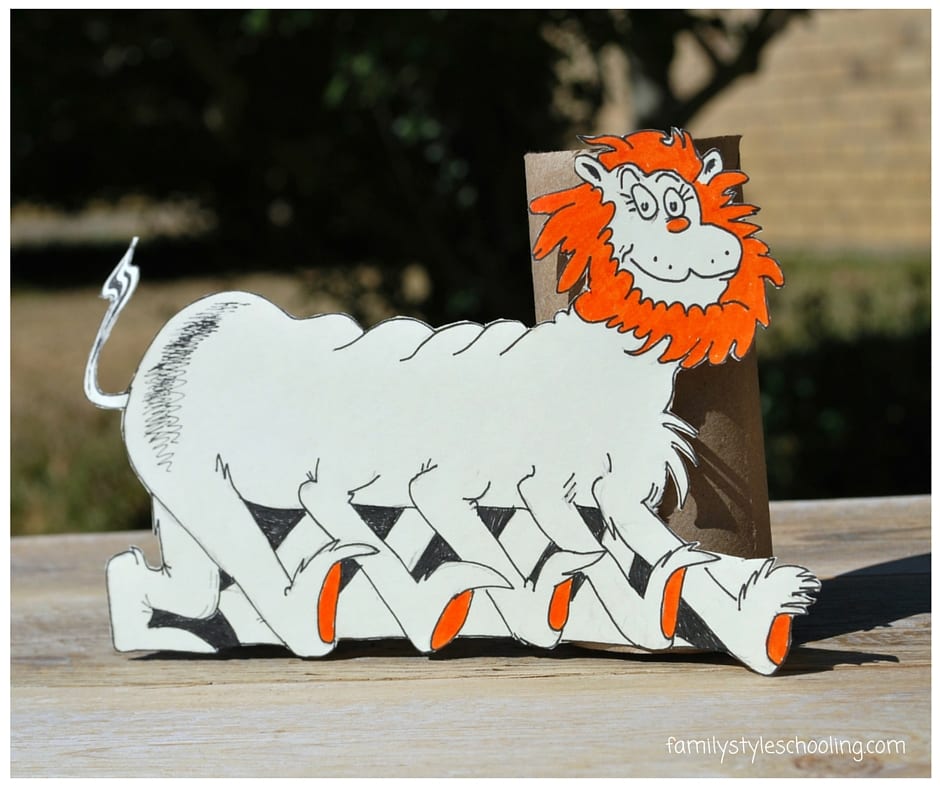
If your young artist isn't ready to draw Dr. Seuss free hand, then you can make a copy to trace.
I used the scanner app on my phone to scan the animal my youngest chose to draw.
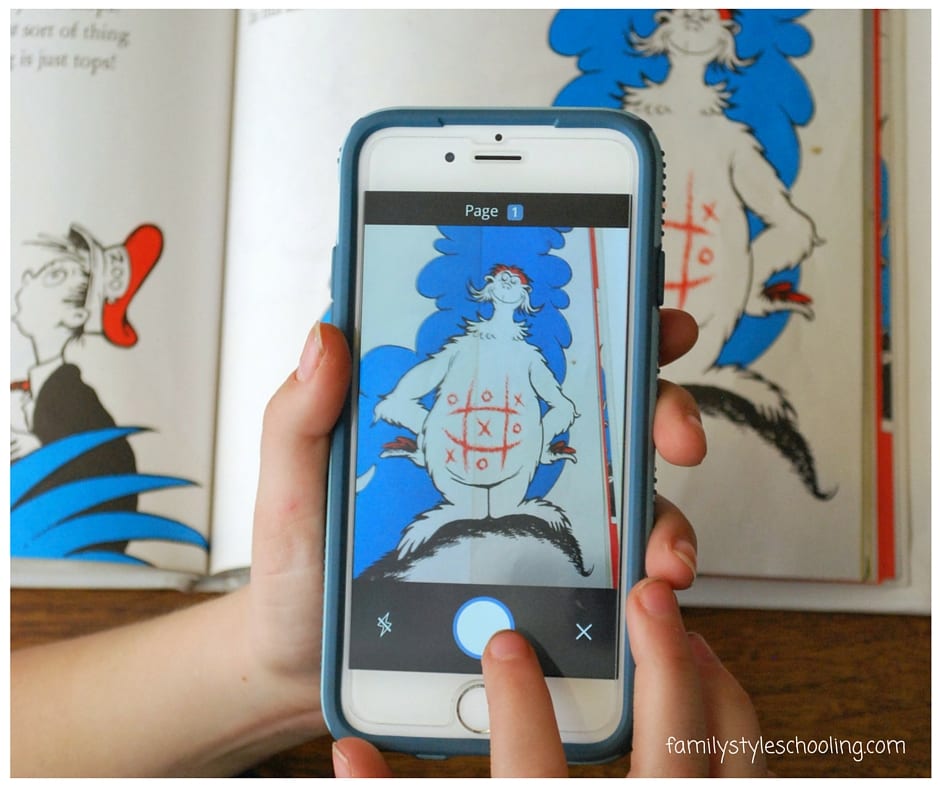
Once you've scanned the image you'd like to trace, you can adjust the settings to turn the picture into black and white. Dr. Seuss's illustrations work beautifully with this.
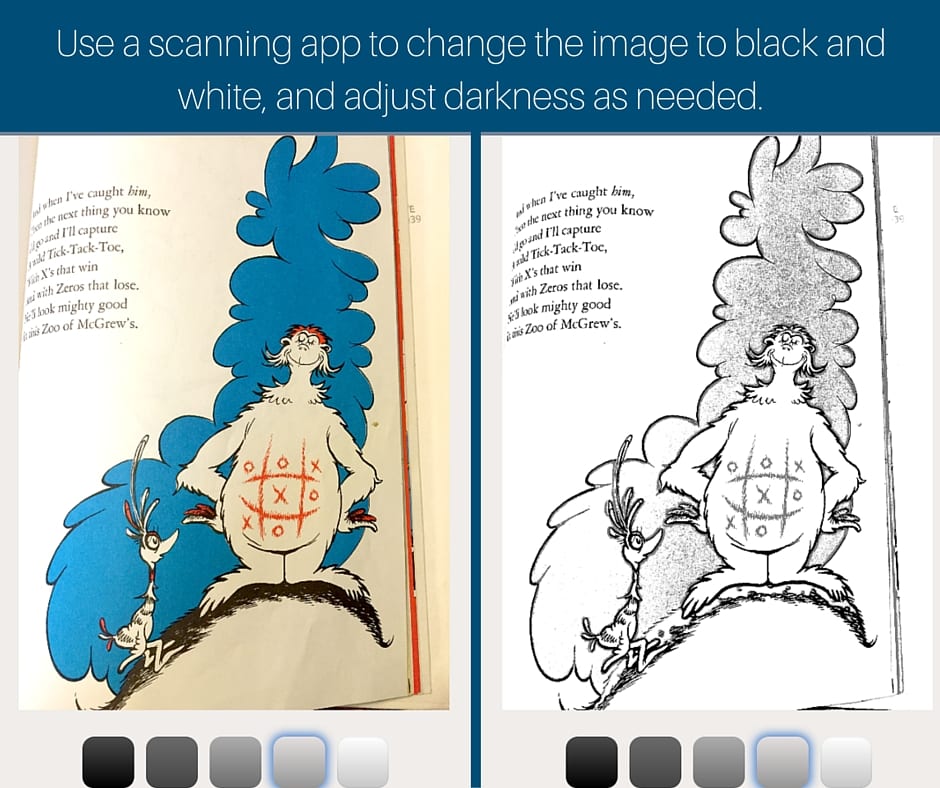
At this point, if I printed the image, it would fill the page. Since my daughter wanted a smaller version to attach to her toilet paper roll, I adjusted the size before I printed by selecting the "2 in 1" option on my printer app. This made the picture print half size, which was a perfect size for tracing.

We love our light box to trace drawings. My girls will listen to read alouds for a long time while tracing drawings on the light box. I should do this more often!
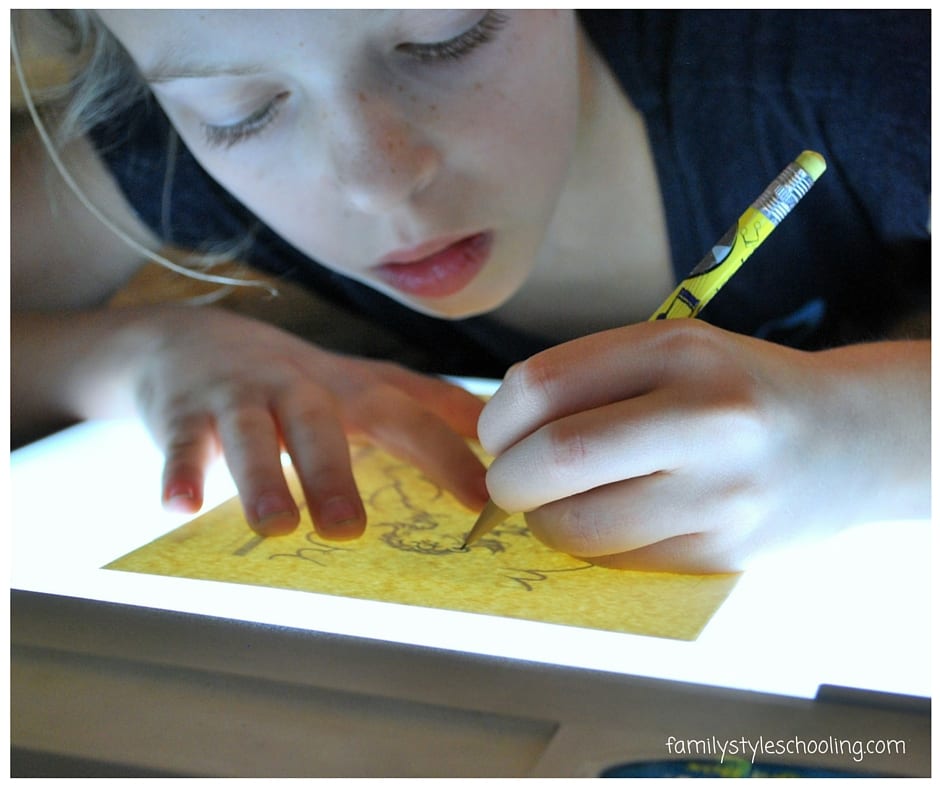
If you don't have a light box, a window is a great alternative. Make sure to put the picture up at a comfortable height for your tracer!
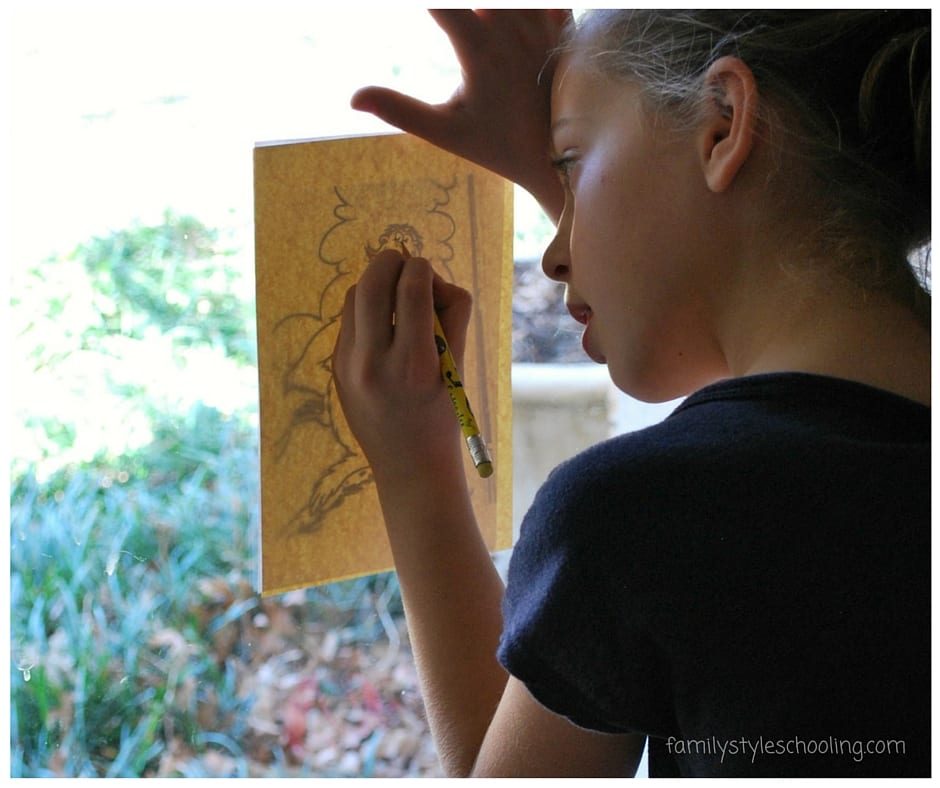
The end result is still attention to detail, but also a great product that your child will be proud of. Who doesn't want a perfect tic-tac-toe monster!
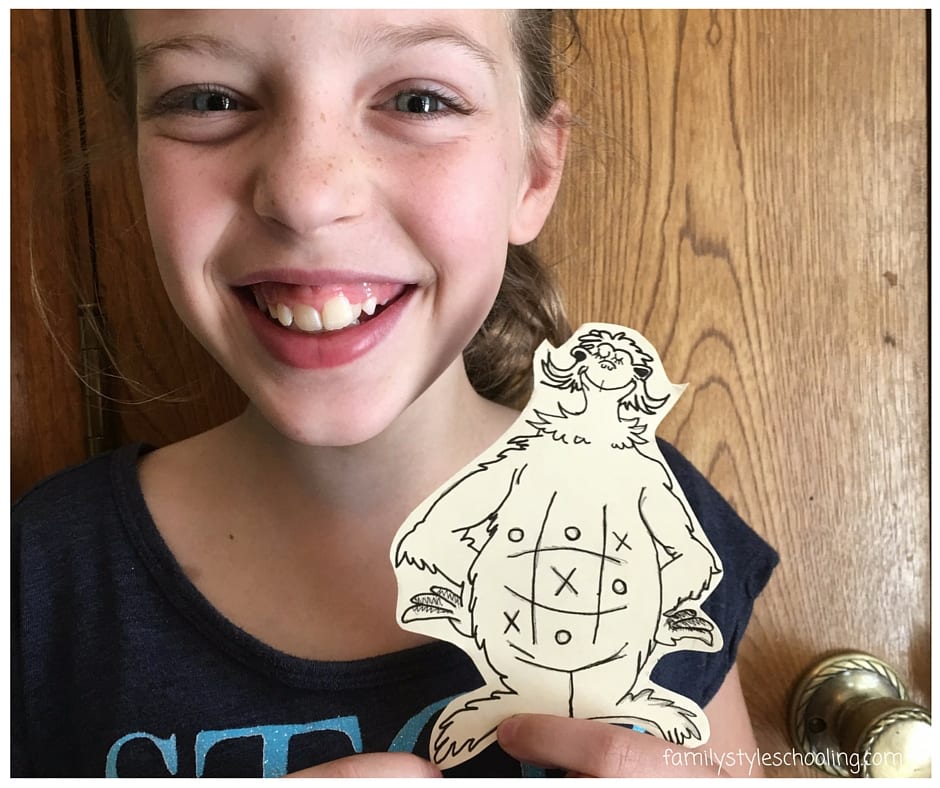
After she traced it, she outlined it with my micron pens (I'm very protective of these).
There are so many ways to celebrate the life and creativity of Dr. Seuss.
Sources referenced:
- The Boy on Fairfield Street: How Ted Geisel Grew Up to Become Dr. Seuss
- The Seuss, the Whole Seuss, and Nothing But the Seuss: A Visual Biography of Theodor Seuss Geisel
- The Importance of Dr. Seuss
How does his work inspire you?
This is part of an iHN "famous birthdays" series. Click the image below to find out about more famous March birthdays.
Betsy Strauss is an unexpected homeschooler, mother of three, who is in a relationship with a sweet man for life. She loves reading books, drinking coffee, and learning anything with her kids.


